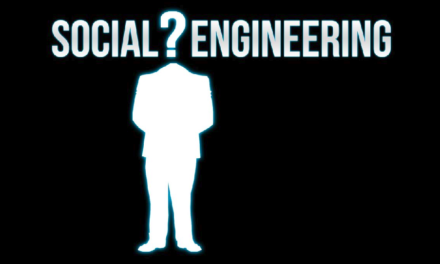Mike here with The SysAdmin School and today I want to talk about a day in the life of a SysAdmin. People are very curious about what the typical day entails for a sysadmin and it isn’t as complicated as you may think. A typical day may differ depending on the company and what the sysadmin should be doing. Many companies have a wide range of roles that a sysadmin should be doing and others have a very specific and narrow focus. I am going to go based on my experience which is really right there in the middle.
My morning – With Coffee
The first thing is I wake up in the morning and for me, I feed my daughter who is 4 months old at the time of this post and I start getting ready for work. Depending on the day I get ready and drive into the office or I get ready and work from home. Really the getting ready part is exactly the same for me whether I am going into the office or working from home. As a SysAdmin, most companies allow you to to work from home if you have a fast enough internet connection and a company provided laptop.
My List
As with most SysAdmins, I have a list I go through in the morning that I check.
Monitoring Emails
This starts with going through monitoring alerts that I have in my inbox in the morning. I can also log into the monitoring software and check on those alerts and what are outstanding. Alerts for critical systems will have a different notification mechanism that will typically page me. So I see those in the morning but they are not new to me because I have already been alerted in a different way (SMS).
What I will also see is if there are alerts that happened overnight or over the weekend that are not critical but need some attention. I will determine which ones I need to take action on because some of the alerts may be just notification alerts that I don’t need to take action on and some alerts may have resolved themselves overnight.
One example of this is an automated script or process that generates files. Well during this automated process we may dip below the 10% of free space on the drive which will trigger an alert. But the last part of the process or script is to delete those files it generated which would take us back above the 10% mark. So the problem that was alerted on is now cleared. Other alerts may be informational alerts list telling us there was high utilization last night on this server or that network device. It isn’t actually a problem but it is kind of a heads up so that you can monitor that equipment.
Many of these alerts I will just scroll through but there may be some I need to take action on like storage space didn’t free up and we are sitting at 10% or important service is down or even a server is down. Those types of alerts are ones I need to take action on. This is a large part of being a Systems Administrator and taking care of those systems when there is a problem.
This also leads me into a very good point and that is monitoring and why you need it. Monitoring is for a whole other post altogether but having that monitoring in place allows me to be a little more proactive and know about a problem before my users do.
This is key to being a good SysAdmin and that is to know about problems before users report it. If you can take care of a problem because you were alerted on it before a user tells you it looks much better and the user never knows there was a problem. If a user has to inform you about a problem because you don’t have the monitoring in place that looks bad on your part. You should have known about that problem before the user did or at least at the same time. Now I am not saying that you can monitor on everything that is just not possible. But you should be monitoring on the larger items like important services or important servers.
Tickets, tickets and more tickets
The next thing after monitoring I go through tickets, tickets that I have outstanding and new tickets that have come in since last night or over the weekend if it is a Monday. Which leads me into putting out fires. Putting out fires if you have never heard is when you try to fix a problem immediately because it is causing downtime or degradation of work for users or customers. For these problems, you are going to typically drop whatever you are doing and you jump in and work on the problem to get it taken care of right now. As you go through your SysAdmin career you will learn what constitutes a fire want what doesn’t and it is different for every company. I have worked for companies that have custom processes and custom scripts written in-house that are very important.
That is pretty much my morning, monitoring, tickets and fires. I separate fires and tickets because users don’t like putting helpdesk tickets in. I have never been to a place where a user liked putting in help desk tickets. Fires are going to be those problems where the user IM’s, emails or calls you to tell you about it. People feel like that they will get a quicker response if they IM, email or call you.
Project Work 🙂
From there on it is a lot of project work, helpdesk tickets, and fires throughout the day. The project work to me is really where I see the most benefit and honestly fun of being a SysAdmin. There is some mundane work you have to do but with projects as a SysAdmin you get to learn, you get to help the business be more profitable, efficient, or secure. It really is just fun when you get to work with new technologies.
Most of the time with projects as a SysAdmin you are the center hub. Your server or hardware is what most projects will be running on. Networking will be connected to your hardware, code and software will be running on your hardware. So you really are the central hub for that project which is why SysAdmins are very involved and pretty deep in projects and many time they are the project leads. I on certain projects that are not 100% me I am the project lead or at least the technical lead. This is my favorite thing about being a SysAdmin.
Learning More!
I have had the privilege to work on implementing many different systems like a VoIP system. Which again may not be directly in the area of a SysAdmin in some companies. But the servers that they run on are managed by SysAdmins and the great thing is you are involved in that project even if it isn’t directly you doing VoIP stuff. You can reach out and talk the admins doing the installs or the VoIP configuration and learn. This brings me back to why being a SysAdmin is such a great career move because it gives you that center place where you determine where you want to go. Me, for example, VoIP was the field I wanted to focus on. As a SysAdmin, I managed servers and the servers that ran our VoIP PBX. But I really enjoyed it and moved in that direction of VoIP and communications. It really allows you to dip your toe into all aspects of IT so you can find what you want. Systems Administration may not be for you but it makes for a very easy transition into other areas of IT.
So that is typically my day as a SysAdmin. Once I leave work I pick up my daughter from day care and I head home.
So I want to thank you for reading and I would love to hear from you. So leave a comment below and let me know what your typical day is if you are a SysAdmin. If you are not and SysAdmin then I would love to know if this this lines up with what you thought a typical day for a SysAdmin would be.
Also please join the SysAdmin School community!





